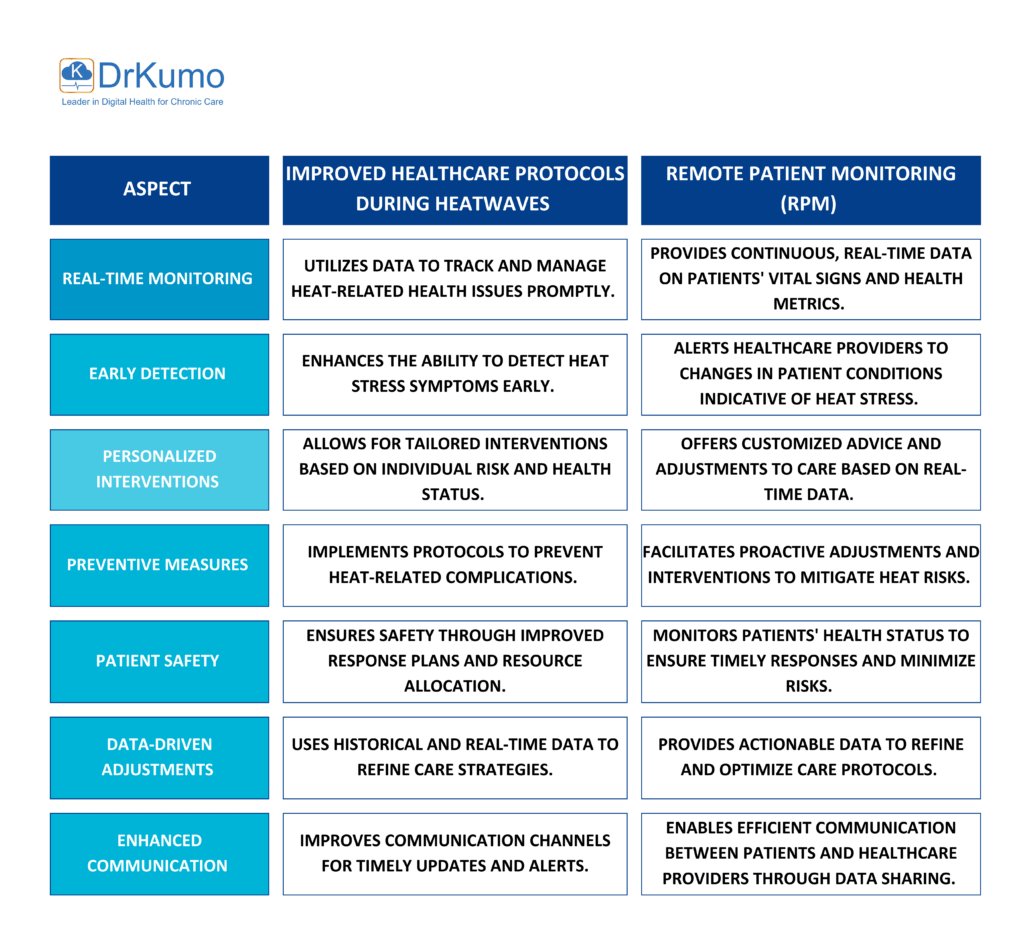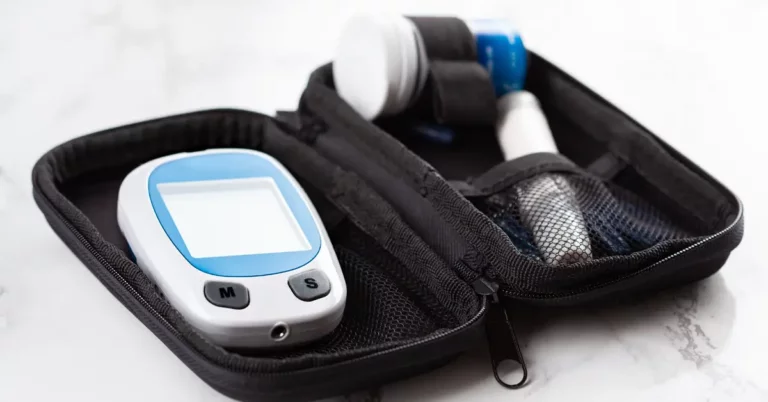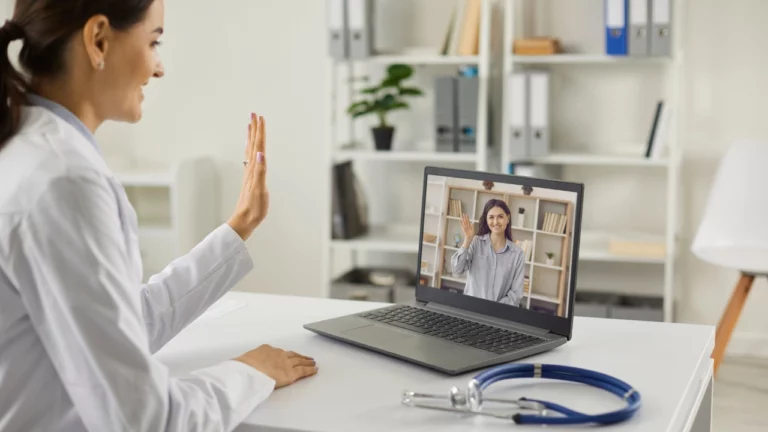As heatwaves become more frequent and intense, managing chronic conditions during extreme temperatures is a growing challenge. For those with ongoing health issues, high heat can quickly turn from uncomfortable to dangerous. This is where Remote Patient Monitoring (RPM) and chronic care management come into play.
By offering real-time health insights and proactive care strategies, RPM empowers patients and healthcare providers to stay ahead of the risks. In this guide, we’ll explore essential emergency tips for navigating heatwaves, all while enhancing your health management with the support of RPM.
Implement Remote Patient Monitoring for Real-Time Insights
According to recent data from the CDC, Remote Patient Monitoring (RPM) offers crucial support during heatwaves by providing real-time data on vital signs. Analysis of Emergency Department (ED) visits from 2018–2023 showed that up to 826 ED facilities reported visits related to heat-related illness (HRI) during warm-season months. In 2023, the daily HRI ED visit rate was significantly higher than the 95th percentile of historical data from 2018–2022, particularly during the hotter months of July and August.
By using RPM tools, healthcare providers can continuously track patients’ health metrics and quickly identify issues arising from heat stress. This proactive approach enables timely interventions and adjustments to care protocols, which is critical given the elevated rates of HRI observed during extreme heat conditions.
Adhere to Chronic Disease Management Protocols
Chronic disease management is essential during heatwaves. Ensure that you are following established chronic condition protocols and management guidelines to mitigate the risk of heat-related complications. This includes adjusting medications as necessary and staying hydrated. RPM can help track these adjustments and ensure adherence to care protocols.
Enhance Patient Management with Remote Tools
Incorporating RPM into patient management can improve the effectiveness of healthcare protocols. By monitoring patients remotely, healthcare providers can offer personalized advice based on real-time data, thus enhancing overall condition management. This integration ensures that individuals with chronic conditions receive the tailored care they need during extreme weather conditions. Here’s a table that illustrates how Remote Patient Monitoring (RPM) can contribute to improved healthcare protocols during heatwaves:

This table outlines how RPM can enhance healthcare protocols specifically during heatwaves, improving the overall management and outcomes for patients.
Stay Informed with Health Guidelines and Emergency Tips
Stay informed:
- Keep up-to-date with the latest health guidelines for heatwave safety.
- Follow recommendations from trusted health sources and authorities.
Cooling measures:
- Stay in cool environments to avoid excessive heat exposure.
- Use fans, air conditioning, or visit public cooling centers if necessary.
Monitoring your health:
- Use Remote Patient Monitoring (RPM) tools to track your vital signs and health metrics.
- Regularly check for any signs of heat stress or related symptoms.
Emergency tips:
- Adhere to emergency safety tips to prevent heat-related illnesses.
- Stay hydrated and avoid strenuous activities during peak heat hours.
Special considerations for chronic health issues:
- Be extra cautious if you have chronic health conditions.
- Follow any specific guidelines or advice from your healthcare provider to manage heat exposure safely.
Conclusion
When the heat is relentless, smart health management becomes critical. Remote Patient Monitoring (RPM) isn’t just a tool—it’s your frontline defense in extreme temperatures. By integrating RPM into your routine, you gain real-time support that keeps chronic conditions in check while you stay cool and safe. Don’t let the heat catch you off guard; rely on RPM to keep your care protocols aligned and your health protected, no matter how high the temperature climbs.
Don’t leave your health to chance during extreme heat—take control with Remote Patient Monitoring. Explore more of our blogs to learn more and start your journey towards proactive health management today!








